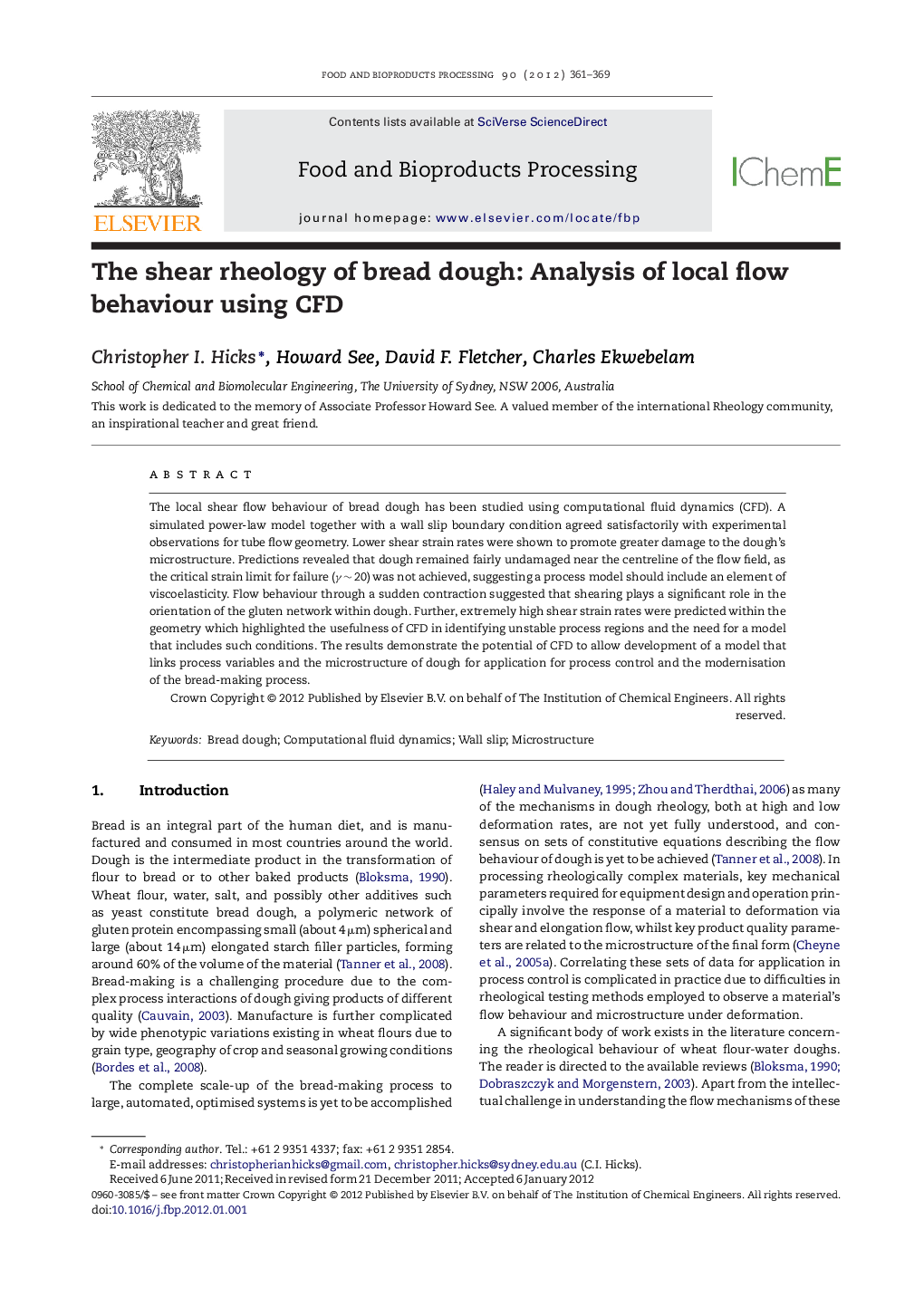| Article ID | Journal | Published Year | Pages | File Type |
|---|---|---|---|---|
| 19049 | Food and Bioproducts Processing | 2012 | 9 Pages |
The local shear flow behaviour of bread dough has been studied using computational fluid dynamics (CFD). A simulated power-law model together with a wall slip boundary condition agreed satisfactorily with experimental observations for tube flow geometry. Lower shear strain rates were shown to promote greater damage to the dough's microstructure. Predictions revealed that dough remained fairly undamaged near the centreline of the flow field, as the critical strain limit for failure (γ ∼ 20) was not achieved, suggesting a process model should include an element of viscoelasticity. Flow behaviour through a sudden contraction suggested that shearing plays a significant role in the orientation of the gluten network within dough. Further, extremely high shear strain rates were predicted within the geometry which highlighted the usefulness of CFD in identifying unstable process regions and the need for a model that includes such conditions. The results demonstrate the potential of CFD to allow development of a model that links process variables and the microstructure of dough for application for process control and the modernisation of the bread-making process.
► Lower shear strain rates are shown to promote greater damage to dough's microstructure. ► Results suggest that a process model should include an element of viscoelasticity. ► Shearing plays a significant role in the orientation of the gluten network within dough. ► CFD presents itself as a useful tool to identify unstable regions when processing dough.
